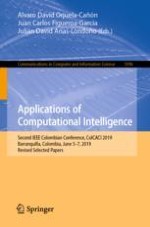2019 | OriginalPaper | Chapter
Influences of the Trained State Model into the Decoding of Elbow Motion Using Kalman Filter
Authors : E. Y. Veslin, M. S. Dutra, L. Bevilacqua, L. S. C. Raptopoulos, W. S. Andrade, J. G. M. Soares
Published in: Applications of Computational Intelligence
Publisher: Springer International Publishing
Activate our intelligent search to find suitable subject content or patents.
Select sections of text to find matching patents with Artificial Intelligence. powered by
Select sections of text to find additional relevant content using AI-assisted search. powered by
